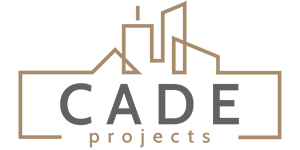Cade Projects collaborates with Winsulate.co.uk, our trusted specialist partner in environmental cleaning. Winsulate delivers sustainable, compliant solutions that align with government standards, focusing on waste reduction, energy efficiency, and eco-friendly practices. Their certified methods ensure high-performance results, meeting the rigorous demands of public sector environmental objectives while promoting sustainability.
Yabadabadoo App and Website: Carbon Calculator and Verified Supply Chain Integration
High-Level Summary
Yabadabadoo is an advanced carbon tracking and management platform designed to align with global environmental standards, such as the Paris Agreement and CATO (Carbon Agreements for the Transport of Operations). The platform seamlessly integrates dynamic carbon tracking, location-based verification, and blockchain-backed transparency to ensure accurate reporting, effective offsetting, and supply chain optimization.
As the Paris Agreement replaces the Kyoto Protocol, Yabadabadoo adopts its flexible, scalable carbon reduction approach while remaining adaptable to emerging standards. By tracking Scope 3 emissions and providing validated physical locations for supply chain and offset projects, Yabadabadoo empowers industries like construction, manufacturing, and logistics to make data-driven, sustainable decisions.
Core Functionalities
1. Dynamic Carbon Calculator
- Purpose: Accurately calculate carbon emissions across materials, transportation, and processes while ensuring compliance with current standards.
- Key Features:
- Customizable emissions formulas tailored to material type and transport modes.
- Dynamic recalculation based on live supply chain updates.
- Support for bulk imports of emissions-related data (e.g., material deliveries).
- Integration with certified carbon databases.
- Offset evaluation using verified projects tied to unique geospatial locations.
2. Geospatial Verification with Blockchain
- Purpose: Ensure physical locations for sources, destinations, and carbon offset sites are uniquely verified and auditable.
- Key Features:
- Utilize What3Words, DGGS tessellated hexagons, or equivalent blockchain-recordable geospatial systems.
- Users can pace (walk/drive) boundaries to create virtual geofences for accurate mapping.
- Visual selection/deselection of map blocks, ensuring previously used blocks cannot be reused unless validated (e.g., mining with depth validation).
- Blockchain ensures tamper-proof tracking of offset locations to prevent fraudulent reuse.
- Integration of depth-based validation for adjacent blocks when applicable.
3. Policing Mechanism for Location Verification with AI
- Purpose: Continuously monitor and validate the claimed use of physical locations.
- Key Features:
- AI-based validation of physical location maps to ensure claimed uses (e.g., trees, roads, mines) match actual land use without requiring physical visits.
- Automatic checks against claimed use cases, such as whether an area is used for mining, forestry, or infrastructure.
- Alerts when inconsistencies are detected (e.g., areas marked for tree planting being used for mining).
- AI-powered image analysis from satellite data to detect unauthorized land-use changes.
- Dynamic updates to blockchain records upon verified changes in land use.
4. Supply Chain Traceability and Real-Time Monitoring
- Purpose: Provide comprehensive visibility across every stage of the supply chain.
- Key Features:
- Real-time tracking of emissions from raw material extraction to delivery.
- Automatic updates when suppliers or routes change.
- Location-based performance metrics to evaluate supplier sustainability.
- Geospatial visualizations of supply chain networks, including carbon-intensive areas.
5. Flexible Data Collection and Management
- Purpose: Ensure data is collected dynamically and managed efficiently for decision-making.
- Key Features:
- Customizable questionnaires to collect emissions data tailored to project type and supplier size.
- User-friendly data entry via mobile app or web interface.
- Version control and dynamic feedback for data validation.
- Centralized database with advanced search and filtering options.
6. Carbon Offsetting and Compliance Tracking
- Purpose: Evaluate and implement effective carbon offset strategies aligned with emerging and established standards.
- Key Features:
- Support for third-party verified carbon offset projects, including forestry, renewable energy, and conservation.
- Integration of Paris Agreement-aligned emissions reductions.
- Automated recommendations for carbon credits based on project-specific needs.
- Monitoring of offset performance and impact.
- Generation of blockchain-backed carbon offset documentation that can be used for making verified carbon claims.
Market Differentiation
- Alignment with the Paris Agreement and CATO: Unlike generic carbon calculators, Yabadabadoo integrates sector-specific standards for transport and operations while remaining adaptable to future frameworks.
- Verified Geospatial Tracking: Physical locations are tied to tamper-proof blockchain records, ensuring offsets and land use are auditable and trustworthy.
- Dynamic Supply Chain Insights: Real-time data from suppliers and transporters allows businesses to optimize routes, reduce emissions, and switch to sustainable alternatives.
- Policing Mechanism for Fraud Prevention: Continuous validation ensures that offsets and claims are genuine and that no location is fraudulently reused.
Use Cases
1. Carbon Accountability for Construction Projects
Scenario: A construction firm receives 250k tonnes of cement delivered to multiple project sites.
Steps:
- Data on supplier emissions, transport distances, and delivery routes is automatically captured.
- Locations of raw material sites and project destinations are verified using geospatial methods (What3Words/DGGS).
- Blockchain ensures that each material source and delivery location is recorded immutably.
- Emissions are calculated and monitored, with recommendations for sustainable transport routes.
- Verified carbon offsets are applied to address remaining emissions.
2. Sustainable Procurement with Location-Based Metrics
Scenario: Procurement teams assess material suppliers for a major project.
Steps:
- Supplier performance, including emissions, sustainability practices, and verified physical locations, is reviewed.
- Procurement dashboards compare carbon footprints and transport emissions.
- Blockchain-backed geospatial data ensures material sources and offset sites are unique and validated.
- The system recommends greener suppliers or offset options.
- Decisions are logged with supporting blockchain evidence for audits.
3. Monitoring Carbon Offsets for Forestry Projects
Scenario: A company invests in tree planting projects in Kenya to offset carbon emissions.
Steps:
- Offset locations are mapped using a blockchain-recordable geospatial method.
- Policing mechanisms validate that the land is actively being used for tree planting.
- Blockchain prevents duplicate claims or fraudulent reuse of offset locations.
- Progress reports track tree growth, carbon capture, and project impact.
- Any land-use changes are detected and flagged for review.
Website and App User Flows
Website (Admin Users):
- Set up questionnaires, data collection processes, and emissions calculation methods.
- Manage supply chain data and validate geospatial records.
- Generate compliance and performance reports.
- Evaluate and select carbon offset options.
App (Field Users):
- Input emissions and location-based data on-site.
- Validate and update real-time geospatial information.
- Receive notifications on performance and offset suggestions.
- Collaborate with suppliers and project teams.
Key Benefits
- Verified Carbon Offsets: Reliable tracking of offset projects ensures accurate emissions reductions.
- Location Integrity: Unique geospatial references prevent fraudulent reuse of land-based offsets.
- Compliance Readiness: Aligns with global standards like the Paris Agreement while adapting to future guidelines.
- Dynamic Data Collection: Flexible questionnaires and geospatial tracking improve data accuracy and usability.
- Scalability: Suitable for small and large-scale projects across multiple sectors.
Van Oord
Van Oord is a global leader in marine engineering and dredging services. They specialize in offshore wind, dredging, and marine infrastructure, delivering sustainable solutions to coastal protection, energy transition, and land reclamation projects. With a focus on innovation and environmental stewardship, Van Oord ensures the long-term resilience of marine environments.
Deme Group
DEME Group is a global expert in dredging and land reclamation, providing innovative solutions for maritime infrastructure projects. Their dredging services support port construction, coastal protection, and waterway deepening. With a strong commitment to sustainability and cutting-edge technology, DEME ensures efficient, environmentally friendly execution for complex marine projects worldwide.
Jan De Nul
Jan De Nul specializes in marine construction, dredging, and environmental services, offering innovative solutions for complex maritime and infrastructure projects. With expertise in land reclamation, offshore energy, and port development, they prioritize sustainability and advanced technology to deliver efficient, eco-friendly projects that meet global environmental and engineering standards.
GLDD
Great Lakes Dredge & Dock (GLDD) is a leading provider of dredging and marine infrastructure services in the U.S. They specialize in coastal protection, port deepening, and land reclamation, ensuring sustainable and resilient solutions. With advanced technology and a focus on safety, GLDD delivers high-quality results for complex marine projects.
How We Work
Waste Management Solutions
Cade Projects leads the way in eco-friendly waste management, offering tailored solutions that minimise environmental impact.
By integrating cutting-edge technologies and optimising waste collection, transport, and treatment processes, we help reduce, reuse, and recycle resources efficiently. Our goal is to extend the lifecycle of materials while preventing waste from overwhelming local environments.
Waste-to-Energy Initiatives
We transform waste into renewable energy, reducing landfill waste and producing clean electricity. Our waste-to-energy projects utilise advanced energy recovery technologies, turning urban waste into a sustainable power source. This contributes to the circular economy by transforming what was once waste into valuable energy for local communities.
Hazardous Waste Remediation
Cade Projects is a leader in hazardous waste remediation, specialising in the safe removal and treatment of asbestos, chemical waste, and other hazardous materials. We ensure that all projects comply with the strictest environmental and safety standards, safeguarding both human health and the natural environment. Our remediation efforts focus on restoring contaminated sites to safe, productive use.




